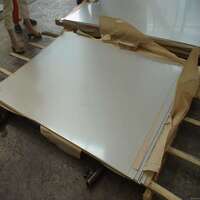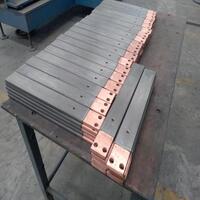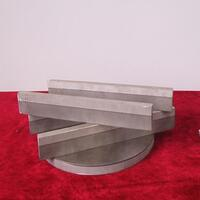1. Introduction
If you’ve ever admired a sleek steel-clad house or wondered why some industrial pipes are wrapped in shiny layers, you’ve encountered metal clad systems. But what exactly does ‘metal clad’ mean? At its core, metal clad refers to composite materials or structures where one metal is bonded—mechanically or metallurgically—to another for enhanced performance. Whether it’s a corten steel facade aging gracefully or aluminum clad stainless steel resisting corrosion in harsh environments, the concept blends aesthetics with engineering intelligence.

In this deep dive, we’ll unpack the nuances between common metal clad types, compare their strengths and weaknesses, and clarify confusing terminology like ‘clad metal meaning’ versus ‘metal clad meaning.’ From residential siding to high-performance alloys used in aerospace, understanding these distinctions helps architects, builders, and engineers make smarter material choices.
2. Understanding Metal Clad: Meaning and Core Concepts
The phrase ‘metal clad meaning’ often causes confusion because it spans multiple industries. In construction, ‘metal clad’ typically describes exterior building elements—like a metal clad wall or metal clad roof—covered with sheets of steel, aluminum, zinc, or copper. Meanwhile, ‘clad metal meaning’ usually refers to bimetallic or layered materials engineered for specific properties, such as stainless clad aluminum or titanium clad plates.
Clad metals are created through processes like roll bonding, explosion bonding, or electroplating. For example, chromium electroplating adds a thin chrome layer to steel for wear resistance, while aluminum clad steel wire combines conductivity with strength. These hybrids leverage the best traits of each metal without the cost of using pure high-performance alloys throughout.
2.1. Common Metal Clad Types in Architecture
Architects increasingly favor metal clad buildings for their durability, low maintenance, and modern aesthetic. Key options include:
- Corten steel siding: Known for its rust-like appearance that stabilizes over time, ideal for dramatic facades but comes with a higher corten siding cost.
- Zinc facade and zinc clad roof: Self-healing patina offers longevity; often seen in zinc clad dormers or vertical standing seam metal siding.
- Copper siding: Develops a green patina, prized for heritage and luxury projects.
- Exterior corrugated metal siding: Affordable and rugged, frequently used in sheds and commercial structures.
- Colorbond standing seam and PAC Clad standing seam roof: Pre-painted steel systems offering color consistency and weather resistance, with PAC Clad HWP and PAC Clad coping used for edge detailing.
2.2. Industrial and Specialty Clad Metals

Beyond architecture, clad metals serve critical roles in demanding sectors. Stainless clad aluminum and aluminum clad stainless steel combine corrosion resistance with thermal conductivity—common in heat exchangers. Titanium clad plates protect against extreme chemical exposure in petrochemical plants.
Electrical applications also rely on metal clad wire, including aluminum clad steel wire and CU clad wire, which balance conductivity, tensile strength, and cost. Similarly, aluminum clad pipe insulation uses reflective metal layers to reduce heat loss in HVAC systems.
3. Performance Comparison: Steel, Aluminum, Zinc, and Copper Cladding
Choosing the right metal clad type depends on climate, budget, and design goals. Corten steel plate offers unmatched weathering resistance but may stain adjacent surfaces during early oxidation—making corten steel siding cost a consideration beyond material price.
Aluminum clad sheet (or aluminium clad sheet) is lightweight and corrosion-resistant, perfect for coastal areas. It’s widely used in metal weatherboard and aluminum diamond tread plate for both looks and slip resistance.
Zinc metal siding and zinc plate provide a clean, minimalist look with a lifespan exceeding 80 years. However, installation requires skilled labor to avoid oil-canning on large panels.
Copper remains the premium choice for heritage-sensitive projects, though its high initial cost and theft risk limit widespread use.

4. Technical Considerations and Material Grades
Not all metal plates are created equal. Engineers specify exact grades based on mechanical and environmental demands. For instance, 316 stainless steel plate resists saltwater corrosion better than 304L, while 6061 T6 aluminum plate offers excellent weldability for structural frames.
Thick steel plate options like 1/4 steel plate or 3/16 metal plate are standard for base plates and heavy machinery. Diamond plate steel—whether stainless steel diamond plate or aluminum diamond plate—adds traction in industrial flooring.
Specialty alloys like Inconel 625 plate or 7075 T6 clad aluminum serve aerospace and defense, where strength-to-weight ratios and temperature resistance are non-negotiable.
5. Installation and Practical Insights
Installing metal clad systems correctly is crucial. Standing seam facade panels must allow for thermal expansion, while corrugated steel facade sheets need proper fastening to prevent wind uplift.
For metal clad electrical wire, local codes (like in Pennsylvania) dictate whether it can be surface-mounted or used outdoors. Always verify if AFCI breakers are required—even with armored metal clad cable.
Maintenance varies: PAC Clad column covers and steel clad inc products often require only occasional rinsing, whereas untreated mild steel plate will rust without protective coatings like zinc nickel alloy plating.
6. Conclusion
Metal clad isn’t just a buzzword—it’s a versatile engineering strategy spanning from your backyard metal clad shed to jet engines lined with inconel weld overlay. By understanding the differences between a steel facade and a zinc clad roof, or why aluminum dominates metal-and-glass cladding systems, professionals can optimize for performance, cost, and beauty. Whether you’re selecting 1/8 inch steel plate for a custom base or specifying alloy clad materials for chemical processing, knowing your metal clad types ensures smarter, longer-lasting builds.
Our Website founded on October 17, 2012, is a high-tech enterprise committed to the research and development, production, processing, sales and technical services of ceramic relative materials such as Metal. Our products includes but not limited to Boron Carbide Ceramic Products, Boron Nitride Ceramic Products, Silicon Carbide Ceramic Products, Silicon Nitride Ceramic Products, Zirconium Dioxide Ceramic Products, etc. If you are interested, please feel free to contact us.
